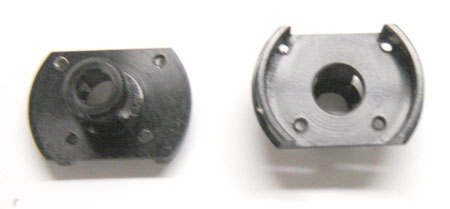Thanks John and Bill,
Ever since I first saw aluminum end bells in the not so back in the day the concept always seemed to be a compromise. I've never had or used one.
If you have to electrically insulate then the result is you will be thermally isolating. So the heat sinking thermal flow would only have a path from the can to endbell mating surface. This could have some cooling advantage for the magnets but it would not be much help in keeping the arm or its commutator cooler.
Other points: IMO
1- I can't really see trusting anodize as an insulator in a threaded hole.
2- By mounting the hardware on phenolic spacer 'jack-stands' that would create an air gap that could be filled with heat sink compound but I don't see that assembly method being free from vibration.
3- Nylon screws would make me 'nervous' as I think they would be at or over their torque and/or thermal limits.
4- Nylon flanged insulators at the mounting points would 'look' logical but same issues as in #2 above.
5- I have Mica insulation wafer, IIRC is like .007 thick which would be more stable for the hardware plates but would still be a thermal insulator and non-conductive screws would still be required.
So .... with all that bla,bla,bla said .... for this application .... John is right, stick with the stock materal part to save money, time and aggravation.
Now ... Does anyone know???
Is the black or natural endbell material more heat tolerant?
Is the P/S or the JK 'plastic' more heat tolerant?
Would boiling the 'plastic' in water (or oil) change its properties? ... guys that dye stuff might have some insight to the effects.
Thanks to all that reply.






















